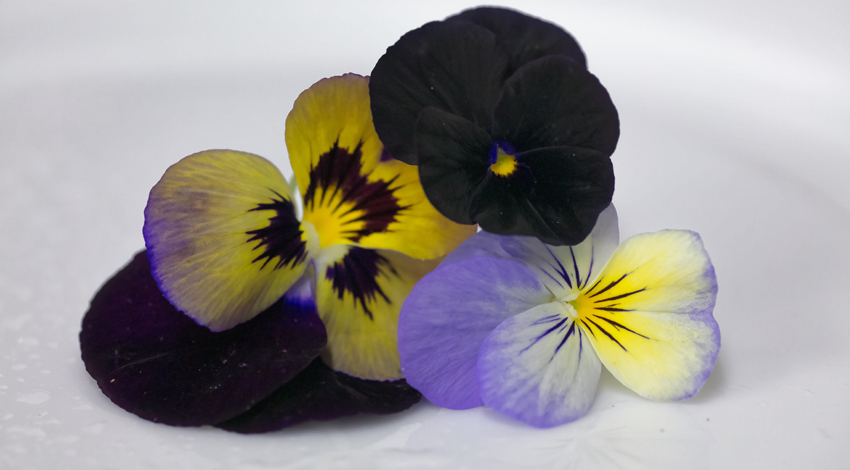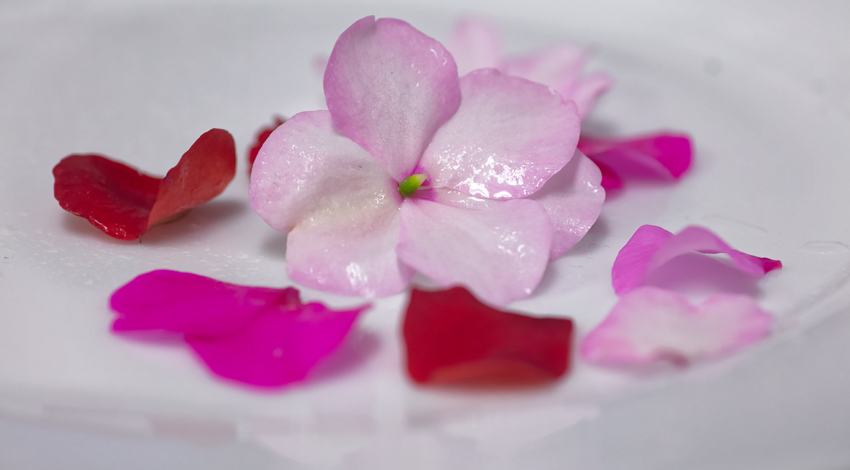Flowers decorate not only gardens but dishes as well. And there is more and more gastronomy employing edible flowers.

A thrill for the eyes as well as the palate, edible flowers are the stars of many a gourmet dish all around the World. Begonias reminiscent of strawberries, bubble-gum-flavoured love-in-idleness or marigolds with a slight hint of saffron being just a few examples.
Edible flowers have been a mainstay in culinary culture since the 17th century. Even if initially their role was a mainly decorative one, specially in jams and liqueurs among other products, they have come to be a complete element of their own triggering the senses in unique ways.
Adorning dishes with flowers is so common in places such as France, Italy and Asia that it is already a tradition. In Portugal it is an expanding market that has already won over several chefs.
Small and delicate, they must undergo a specific growth procedure, fit for their purpose. In order for this product to reach its maximum potential in terms of flavour and freshness, it needs to be grown in a controlled environment, its exposure to light and water regulated.
Using it, though, requires but one’s imagination. Sauces, salads, flower sugar, frozen in ice cubes, cheeses or simply plated in an exceptional manner. The edible flower is the perfect ingredient to catch your eye as well as your palate.
The market for this kind of product in Madeira was rather limited and heavily dependent on France, Spain and Évora meaning that it would take many days for it to reach the island and its price would be a hefty one. Today no such problems persist and because they are produced locally, the freshness of your dish is o a completely different level.

Microverdes is a affirm born from the attempt to correct a deficiency on the market. Cristina and Eleutério Costa, two remarkably passionate entrepreneurs, let Essential in on their garden of wonders.
‘We started by acquiring some seeds, and starting a few crops, with a few samples because, of course, flowers are seasonal. Some grow annually and others biannually’ explains Eleutério Costa, also a chef. ‘Each flower has its own attributes, many are scented and others have flavour with some being neutral, serving simply to decorate the plate, even though they are also edible’.
When decorating a plate ‘visual impact matters a great deal’. And if flavour truly is the linchpin of a dish, chef Eleutério Costa reminds us ‘how if we buy a dish with and without flowers, the difference is as big as day and night, the impact is huge’.
The seasons greatly influence how a dish is decorated. In winter, darker colours and more velvety textures are the ones most sought after while spring is the season of bright colours and light petals.
Eleutério Costa explains how kitchens seek more and more flavoured flowers. Desserts, for instance, are the playground where chefs play with the sweetness of flowers. For chef Eleutério, though usually desserts are already beautiful, the addition of flowers raises them to a whole different level.
As always, drinks are no exception. Flowers can be used in cocktails such as the Bloody Mary, Gin & Tonics, Bacardi or even Gooseberry Elderflowers.
Balancing textures, from the more fibrous to the more velvety ones, sweet and hot palates and lighter and heavier aromas, the art of ringing flowers to gastronomy requires experience, knowledge and above all imagination. A trend that thrills the senses, with added health benefits, which high gastronomy has more and more reasons to follow.














